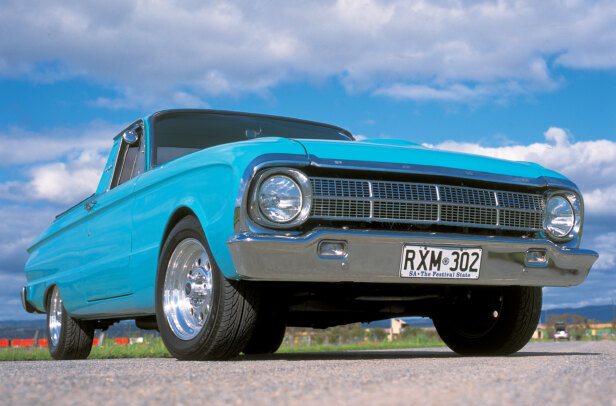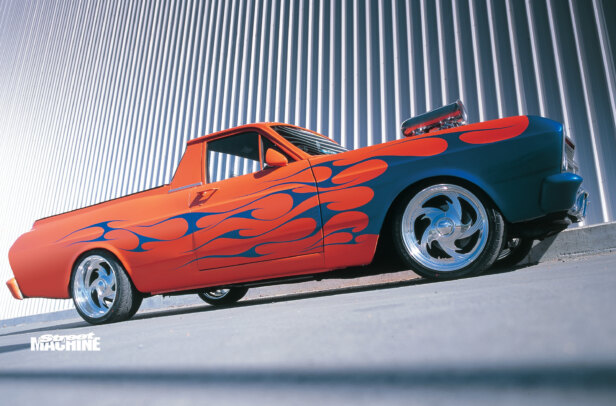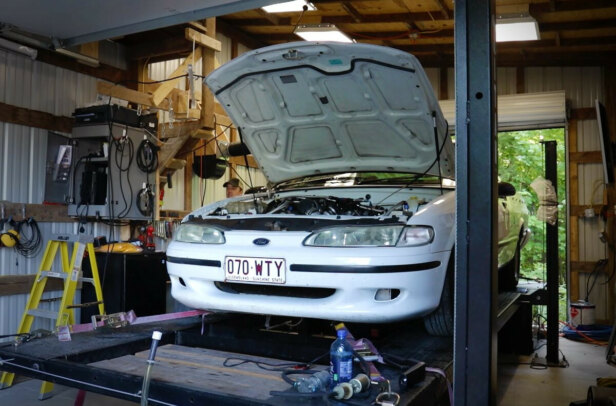While Holden was the king of concept cars during the 1990s and early 2000s, Ford Australia also released some crackers. And two of our favourites have a distinctly off-road flavour.
The XH Falcon Terra
The Terra was developed in partnership with RMIT design students, and made its debut at the Melbourne motor show in 1997.
Using a standard 4.0-litre six-cylinder ute as a blank canvas, the Terra had its suspension raised by 40mm and was given a set of 15-inch alloy wheels dressed in massive Yokohama mud tyres.
It might have had the looks, ground clearance, and rubber for some serious off-road action but, like the ute on which it was based, the Terra was rear-drive only.

Up front was a chrome-plated nudge bar with incorporated underbody bash plate for unlucky wildlife and ill-placed rocks, while the skeleton tailgate mimicked the construction with more bar work.
Overhead, a sports bar, also in chrome, supported massive driving lamps that look decidedly dated in today’s world of slim LED light bars, but on the inside, its sat-nav was front-line tech.

While it is hard to equate the value of any concept that doesn’t make it into production, it’s safe to say the XH Terra was a bit of fun and little more than an opportunity for some good publicity, but for its go-anywhere ute revisit, Ford got a little more serious.
The Ford R5
Debuting at the 2000 Sydney motor show, the Ford R5 again used the underpinnings of the Falcon as its basis (this time the AU XR8 sedan – not the ute) but added more significant changes, including a completely new body from the B-pillar back to accommodate a second row of seating as well as a tray.

Like the XH Terra, the R5 was also rear-drive with a raised ride height and knobbly tyres, but boosted its all-terrain ability with an electronic traction control system that was tailored for loose surfaces rather than asphalt. It also had its 5.0 litres of V8 power sent through a manual gearbox for maximum grunt.
At the time of its launch, Ford Australia’s chief designer Rob Strong said the tough truck was far more than a show pony, and wasn’t far from production, if given the green light.
“It’s not out there to just titillate show-goers,” he said. “It’s a credible idea.”
Race car side-exit exhausts would never have made it from show floor to show room, but there were other features that showed real promise, including the 240-volt charge socket built into the rear bumper, as was a 50-litre water tank and an electric winch at the front – items that are prized by hardcore off-road enthusiasts today.

Access to the second row of seating was made easier via a suicide-opening rear door on the driver’s side; instead of having to scramble past the front row. If the load tray capacity of the two-seater AU ute was needed, a clever 60/40 folding hatch allowed items to be loaded into the cab from the back.
The concept’s development cost of $250,000 was minimised, in part, by poaching components from other models such as the air vents from a Ka, a steering wheel sourced from the Mondeo, and tailgate hinges from an F150 truck.
There were glimpses of future design however, including the faired-in quad headlights that would feature later in the Falcon’s lifecycle.
History tells us that rather than bring the R5 into production, they went for the phenomenally successful Ford Territory SUV instead. While this was no doubt the right way to go in terms of shifting units, we can’t help but dream of having access to AU to FG-X R5s on the used car market now.



Comments